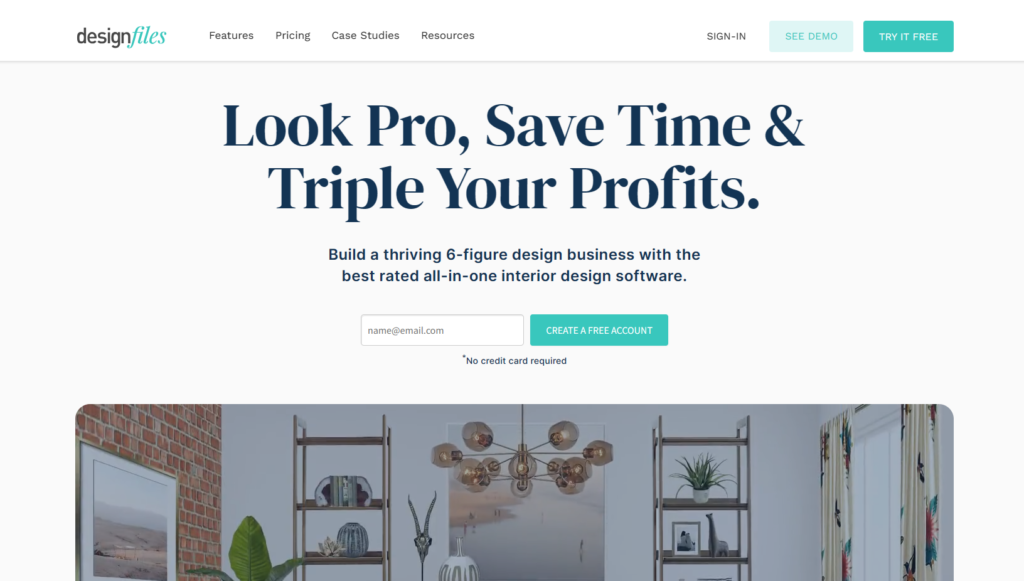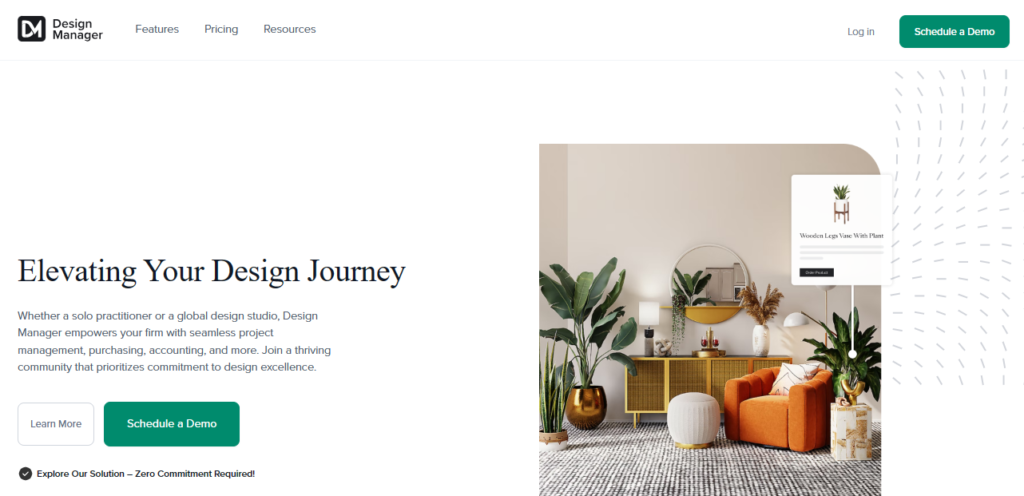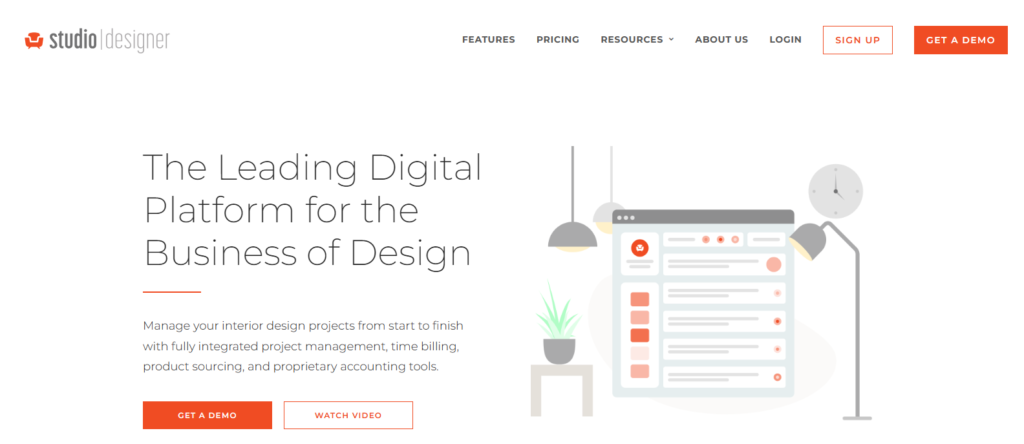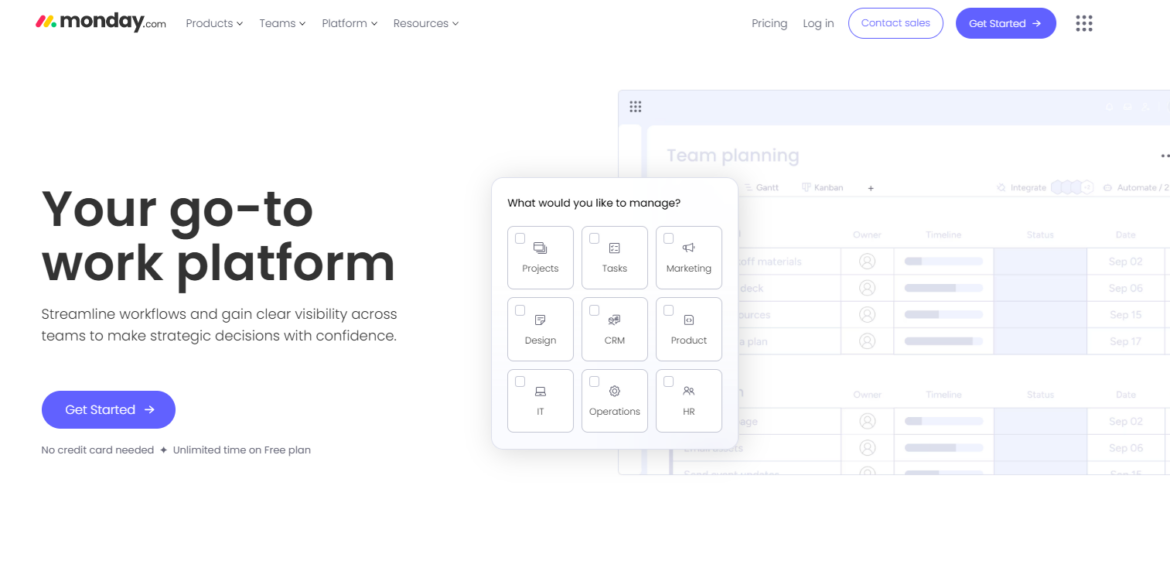If you’re an interior designer looking for an alternative to Programa in 2026, you’re in the right place.
While Programa offers powerful features for spec sheets and back-office tasks, it doesn’t include built-in design tools like floor plans or 3D rendering—features many design firms need in an all-in-one solution. Whether you’re a solo designer, a growing team, or a large firm, this roundup will help you explore the best tools on the market that match (or even outmatch) Programa’s capabilities.
From powerful rendering engines to full project management platforms, here are seven of the top Programa alternatives for interior designers this year. Each one brings something unique to the table, so you can find the best fit for your workflow.
Table of Contents
Why seek out an alternative to Programa?
As with any type of interior design software, Programa isn’t going to be a perfect fit for every business.
One reason to consider an alternative is Programa’s lack of design tools. You can use Programa alongside an interior design software if you’d like, or you can look for an all-in-one program that combines design, project management, presentation, communication, and accounting (and yes, these true all-in-one tools do exist!).
Another reason to look elsewhere is financial management. If you’re already set up with a tool like QuickBooks, for example, you may want to stick with an interior design business software that integrates with your current system. If you have a larger firm that requires accounts payable and accounts receivable, you may want a tool that has deeper accounting features built in.
Learn more about the pros and cons of Programa software in our guide.
7 alternatives to Programa’s design software
Below we’ve listed some alternative options that you can check out to find the perfect software fit for your business needs.
1. DesignFiles

DesignFiles is a true all-in-one interior design program. It has everything you need from quotes to client deliverables (including built-in design tools, so you do not need to use a separate design application). It’s built to streamline each area of your business to get you making more money in less time.
Features:
- Moodboards, floor planner, and 3D model renderings
- Customizable product library and browser extension product clipper
- Project management features, such as project calendars, task management, and time trackers
- Client portal for feedback, approvals, documents, payments, and communication
- Team collaboration capabilities
- Branded PDF presentations
- Quotes, invoices and the ability to accept online payments
- Purchase orders and order tracking
- Accounting features, including basic financial reports and QuickBooks integration
- Digital contract creation and sending/signing
Pros:
- DesignFiles is known for being intuitive and easy to use.
- Video training and a responsive support team can help with anything you don’t understand.
- The branded client portal elevates client experience.
- DesignFiles has the lowest payment processing fee in the interior design industry.
Cons:
- Their 3D software does not offer photorealistic renders at this time
Pricing: DesignFiles offers two main plans: the e-Design plan at $49/month for virtual designers and the Full Service plan at $69/month for in-person or hybrid design businesses. Both plans include unlimited projects, moodboards, floor plans, 3D renderings, client portals, invoicing, task tracking, QuickBooks integration, and more. Additional users cost $25/month each.
2. Design Manager

Design Manager takes care of the administrative side of interior design, from project management to accounting and purchasing. Combine it with design software to meet most, if not all, of your business needs.
Features:
- Interior design project management
- Task assignments
- Time tracking and billing
- Invoicing and payment processing
- Built-in firm-level accounting
- Purchase orders and order tracking
- Automatic reports for both project and business-wide data
- Client payments for document sharing, payments, and project communication
- Showroom management for larger clients.
Pros:
- The support team is highly responsive.
- The accounting system includes advanced features, such as accounts payable and accounts receivable.
Cons:
- Design Manager requires upfront time and effort to master its many features.
- It may work better for larger firms, and you would need to purchase a design software alongside it.
Pricing: Design Manager is available at a flat rate of $79 per user per month. This single-tier plan includes access to all major features such as project management, accounting, purchasing, product clipping, time billing, and support, with no hidden fees or tiered limitations.
3. Gather

Gather covers all project management needs for interior designers. You can use it alongside design tools and invoicing/accounting tools to cover all of the services your business requires.
Features:
- Digital resource storage
- Customizable product library with a clipper tool for quick data gathering
- Shareable product pinboards for visualization
- Accurate price calculator that accounts for discounts, quantities, shipping costs, and more
- Branded documents and reports like product lists, spec packages, costs by area, costs by type, and more
- One-click spreadsheet visualization tool
- Streamlined client communication (product feedback, approval requests, and more)
- Additional communication tools for team members, suppliers, and contractors
- Project management tools including timed reminders and task trackers.
Pros:
- Gather is easy to use from the start, as team onboarding is included for paid accounts.
- A free trial is available for all users.
- Thanks to its web clipper and auto-filling capabilities, it’s a great time saver for interior designers.
- The client portal is easy to use, even for clients who aren’t tech-savvy.
- A 14-day free trial is available for all accounts.
- There’s no commitment once you begin your paid plan with Gather.
Cons:
- Gather doesn’t have accounting or invoicing capabilities.
- There are no built-in design tools.
Pricing: Gather offers three pricing tiers: Spec Lite at $99/month for basic specification tools, Spec Pro at $199/month for advanced features and large projects, and Spec Premium with custom pricing for larger teams needing tailored support. Each plan includes one seat, with additional users at $39/month.
4. Studio Designer

Studio Designer can be used for almost every aspect of the interior design process. It doesn’t have a floor plan builder or built-in rendering, but it can be used for everything else from product sourcing to presenting and invoicing.
Features:
- Studio Capture web browser tool for painless product sourcing
- Mood board creation
- Branded PowerPoint presentations
- Project management and collaboration
- Built-in time tracker
- Integrated accounting and reporting
- Proposals, invoices, and orders
- Client portal for design feedback, payments, and more
Pros:
- Studio Designer can save significant time once it’s set up to fit your business.
- It can also save you money by combining project management and accounting (if you currently pay separately for these subscriptions).
- The software often adds new features at no additional cost.
- It’s one of the few project management software for interior designers that can accept payments.
Cons:
- Studio Designer does not offer free trials or free-forever accounts.
- Users report a steep learning curve when first starting with this software.
- You will still need a separate design software for floor plans.
Pricing: Studio Designer offers three paid plans ranging from $72 to $109 per user per month. The higher tiers include more advanced reporting, customization options, and priority support features.
5. Monday.com

Monday is a project management software that allows users to build boards for all project types. It isn’t specific to interior design, but it can be customized to fit industry-specific needs.
Features:
- Create project plans
- Set deadlines
- Assign tasks to team members
- Customizable automation
- Track project progress
- Integration with more than 200 top apps and software for communication, marketing, storage, and more
Pros:
- Monday can be customized to fit your needs. You can create a board to track almost anything, from project tasks to budgets.
- Project templates can save you time during the setup process.
- Monday’s customer support team is highly responsive via chat.
- Free and paid plans are available.
Cons:
- Since Monday isn’t specific to interior design businesses, it lacks several important features such as pre-built product libraries and industry-specific supply lists.
- Monday does not include invoicing or payment processing features.
- It can take a while to set up specialized boards on Monday, while other Programa design software alternatives have systems already made for interior designers.
Pricing: Monday.com offers a free forever plan for up to two seats, with paid plans starting at $9 per seat per month when billed annually. Higher tiers add automation, integrations, advanced views, and enterprise-level workflow features as you scale.
6. Morpholio Board

Morpholio Board is a design-focused moodboard app built especially for interior designers, decorators, and creatives. It combines drag-and-drop simplicity with professional tools like AR furniture previews, auto-generated sourcing lists, and background removal. Best used for visual presentation and product organization, it’s especially popular with iOS and Mac users.
Features:
- Moodboard and collage creator
- AR tools for furniture and color sampling
- Swatch Maker for custom palettes and real-world color capture
- Smart background removal (Magic Lift + Magic Wand)
- Custom product and image libraries
- Web clipper and Pinterest integration
- Auto-generated sourcing lists and spec sheets
- Multi-page project organization
- Export boards as PDFs, PSDs, or images
- iPhone, iPad, and Mac compatibility
Pros:
- Offers a powerful, polished design experience
- Intuitive for creatives, with lots of layout tools
- Great for client-facing presentations and moodboards
- Includes live links and sourcing details with exports
Cons:
- No built-in floor planner or rendering engine
- Limited to Apple devices
- Not ideal for back-office management or accounting
Pricing: Starts at $4.99/month for Essentials. Premium ($7.99) adds export options. Pro ($11.99) unlocks full feature access.
7. Foyr Neo

Foyr Neo is a rendering-first interior design platform built to produce stunning visuals fast. With AI-powered features, it lets designers quickly generate floor plans, create moodboards, and deliver photorealistic 4K renders or 360 walkthroughs. It includes a huge model library, branded catalogs, and even AR capabilities for next-level design presentations.
Features:
- Drag-and-drop 2D/3D floor planning and space layout
- Over 60,000 3D models and 1,500+ templates
- Lightning-fast 4K rendering and 360° walkthroughs
- Moodboards and client-ready shopping lists
- AR design previews and real-time collaboration
- AI tools for faster design generation
Pros:
- Speeds up rendering and visualization significantly
- Easy to use for both beginners and advanced designers
- Impressive visuals that help win clients faster
Cons:
- Light on business features like invoicing or client tracking
- Rendering credits may add to your monthly cost
Pricing: Plans start at $49/month per user. Custom rendering and design services also available.
Frequently asked questions
Programa and DesignFiles stand out as the top two names. Both of these softwares effectively streamline admin tasks while also making it possible for you to provide top-notch client experience.
However, DesignFiles has a definite leg up. The DesignFiles software includes the tools you need for your actual design work. Programa, on the other hand, needs to be paired with a separate design application.
Gather and Studio Designer are common runner-ups. They streamline significant pieces of the design process while requiring slight support from other applications.
All of the apps above can help you manage projects more effectively. However, it’s important to choose a program that has the right features for your business. For example, some designers may rely heavily on billable time trackers while others prefer designing in the same software that they communicate with clients in, so there’s no need for repeat uploads between rounds of requested changes.
To choose the best design platform for your own project management, make a list of the features that are most important to you. Compare that list to the features, pros, and cons shared above. Look further into the software that comes closest to a perfect match. If you want the platform with the most features, we recommend giving DesignFiles a try.
If you don’t find a great match here, visit our blog post on the best interior design business software for even more options.
![Top 7 Interior Design Project Management Software [2026 Guide]](https://blog.designfiles.co/wp-content/uploads/2024/06/AdobeStock_215623020-768x512.jpeg)

